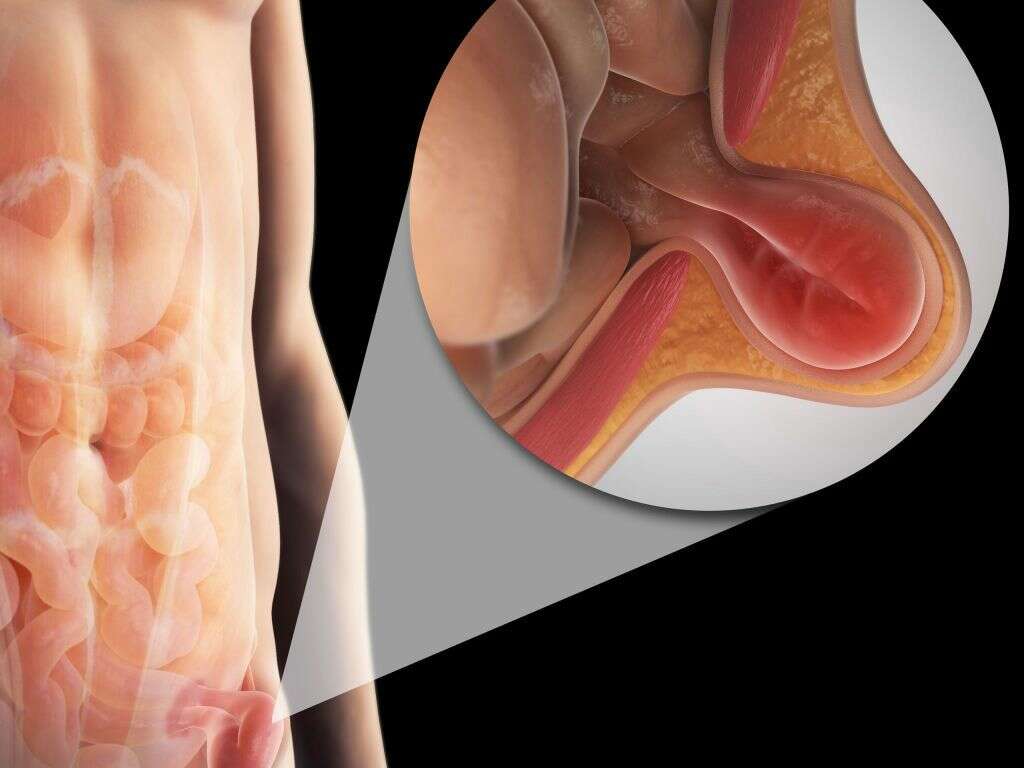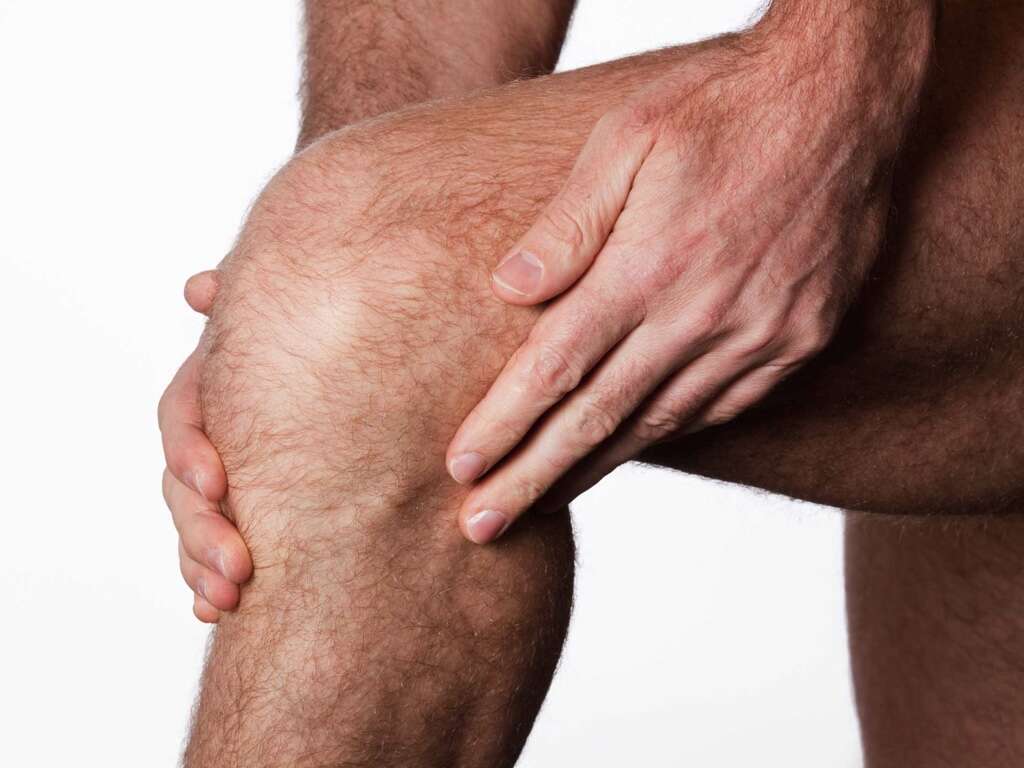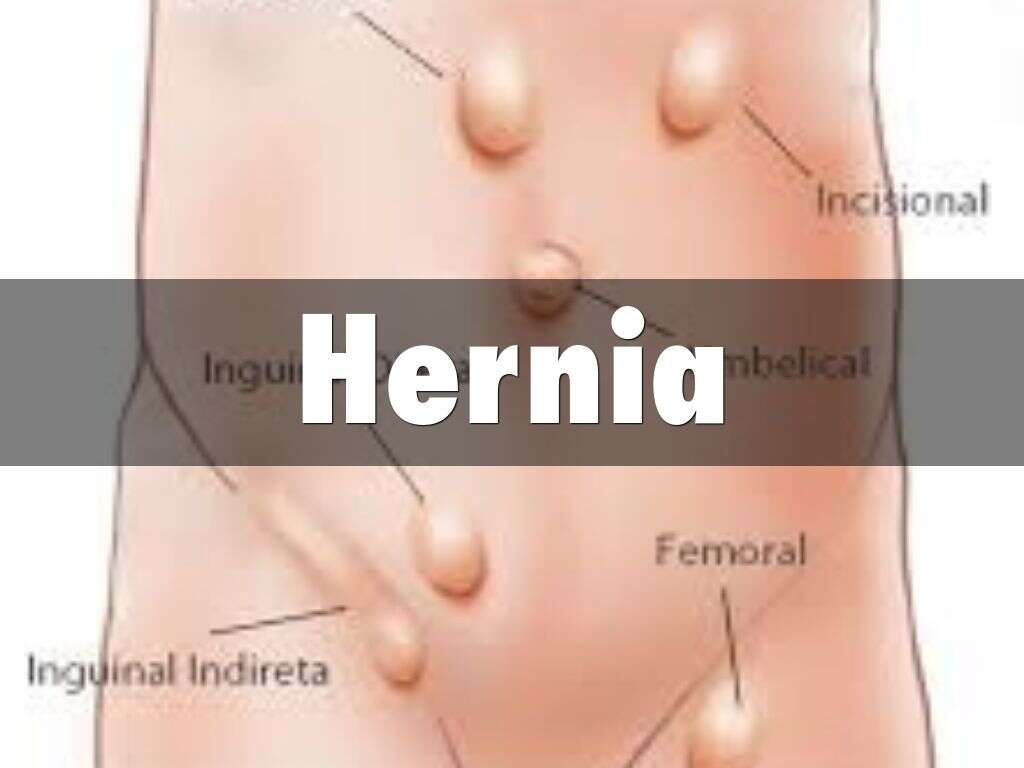What Is a Hiatal Hernia?
The diaphragm is a sheet of skeletal muscle that separates the thoracic cavity from the abdomen. In its structure, it contains an important opening, also known as diaphragmatic hiatus, that allows the esophagus to pass through in order to reach the stomach in the abdominal cavity. Note that the thoracic cavity should only contain important blood vessels, the heart, the esophagus, airways, and the lungs. A hiatal hernia is a condition where a part of the stomach protrudes or prolapses through this hiatus into the thoracic cavity. Hiatal hernias are usually an incidental finding because they are mostly asymptomatic. Rarely, patients with this condition can develop life-threatening complications.

1. Epidemiology
Hiatal hernias are more common in the West hemisphere. Also, the frequency of hiatus hernia increases with age due to the loss of elasticity, muscle weakening, and loss of muscle tone around the diaphragmatic hiatus as people age. Thus, roughly more than half of the patients are older than 70 years. Finally, hiatal hernias are more common in women, possibly due to increases in intra-abdominal pressure during pregnancy.

2. Risk factors
People over the age of 50 are more likely to develop a hiatal hernia than others. Another important risk factor for hiatal hernia is obesity, due to an increase in intra-abdominal pressure.
Finally, people who take part in activities (i.e. exercising, lifting heavy objects) or suffer from conditions (i.e. chronic cough, vomiting, chronic constipation) that involve persistent and high pressure on the surrounding muscles, are more likely to develop the condition.
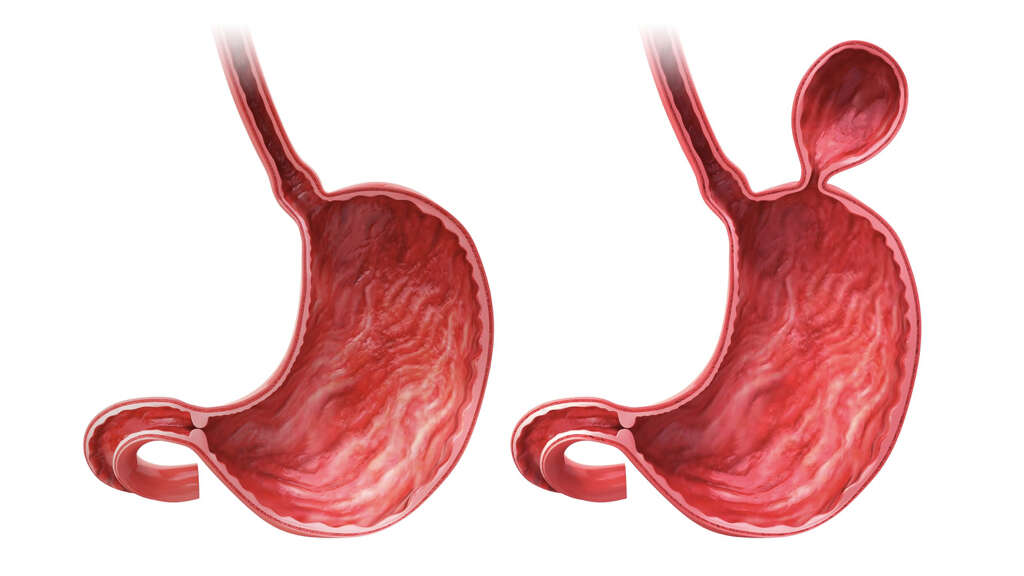
3. Sliding Hiatal Hernia
Hiatal hernias can be categorized into two main subtypes: sliding hernias and paraesophageal hernias. Roughly 95 percent of hiatal hernias are sliding hernias. According to current anatomical classifications, a type I hernia is a sliding hiatal hernia, which will migrate or slide through the diaphragmatic hiatus into the thoracic cavity.
In this case, the gastroesophageal junction, or the point where the distal esophagus joins the proximal stomach, is the part of the abdominal digestive tract that ascends above the diaphragm. Importantly, the stomach remains in its longitudinal alignment and the upper domed- shaped part of the stomach (fundus) remains below said junction.
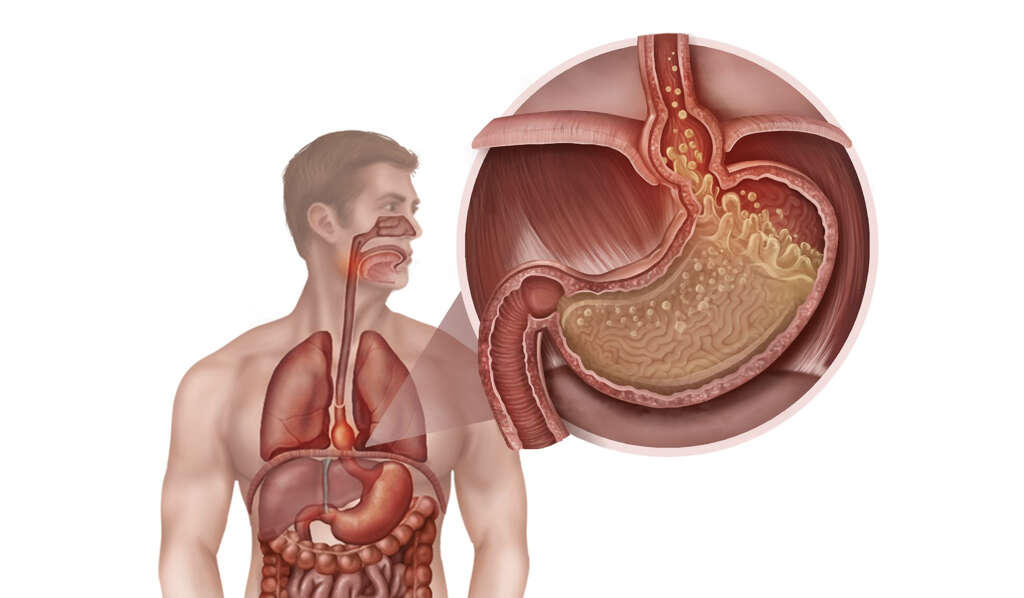
4. Paraesophageal hernias
According to the anatomical classification of hiatal hernias, hernias in type II, type III, and type IV are referred to, as a group, as paraesophageal hernias (next to the esophagus). These hiatal hernias are less common but are more cause for concern. Asymptomatic hernias can be safely observed; however, when a paraesophageal hernia becomes symptomatic, it usually requires repairs. Importantly, some paraesophageal hernias (PEH) are at a higher risk for complications, such as incarceration (i.e. stomach gets stuck in the hiatus resulting in obstruction) or ischemia (the blood supply is restricted).
In type II hiatal hernias, the stomach and the section of the esophagus that joins the stomach (gastroesophageal junction) remain in their normal position. However, a portion of the upper part of the stomach (fundus) slides up into the chest through the hiatus. In short, only a part of the stomach makes up the hiatal hernia and ends up in the thoracic cavity next to the esophagus. Furthermore, in type III hernias, both the gastroesophageal junction and the fundus slide through the hiatus, adjacent to the esophagus. Of PEH, more than 90 percent are Type III. Finally, type IV hiatal hernias are characterized by the herniation of an abdominal structure (other than the stomach), such as the colon, or small bowel.
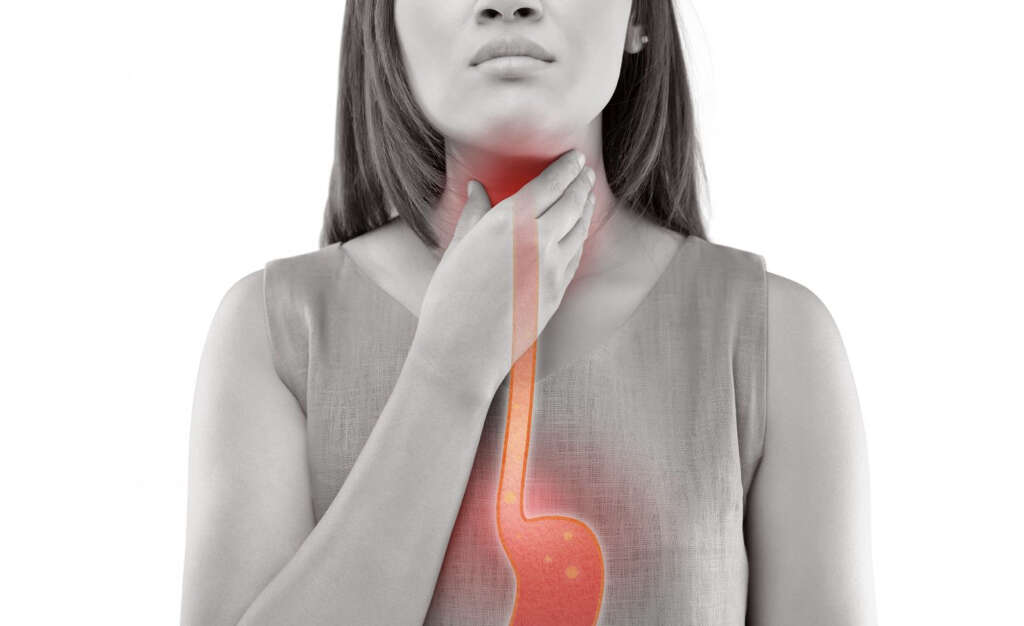
5. Symptoms: Heartburn
Hiatal hernias in themselves do not cause symptoms. However, they may predispose to acid reflux or worsen this symptom in some individuals. Heartburn is a sensation of discomfort or burning pain in the upper- chest that usually worsens when lying down. This condition is caused when the contents of the stomach are able to escape the stomach, through the esophageal sphincter, towards the lower part of the esophagus.
These juices are caustic, after all, they help us to break down our food, but our stomachs have a protective lining to keep them safe from the acidity. Our esophagus, however, has no such protective lining and the acids can damage it as a result. If you experience chronic heartburn, seek medical attention to check for gastroesophageal reflux disease (GERD).

6. Symptoms: Regurgitating Food
When we swallow our food down, we generally want it to stay down. Bringing it back up again is never pleasant. However, if you have certain medical conditions, then it can be harder to keep your food down. Some hiatal hernias (PEH Type II and Type III) can result in mechanical obstruction of the lower esophagus, causing regurgitation.
Furthermore, some patients may also experience dysphagia or difficulty swallowing (most often solid foods).

7. Symptoms: Chest Pain
Our different body parts are generally packed in quite tightly, with each part having its own space. In the case of a hernia, one body part will be invading the space of another, and this can result in some discomfort. In instances of a hiatal hernia, the top of the stomach is being pushed up into the chest cavity, and this will put pressure on the surrounding organs and tissues.
The result can be a pain in the chest. In addition, the stomach can also press against the lungs, restricting the capacity of the lungs. This can, in turn, leave the patient feeling short of breath.

8. Complications
As mentioned previously, hiatal hernias are usually asymptomatic. However, some complications can produce symptoms. Some esophageal complications include esophagitis or the inflammation of the esophagus, esophageal ulcers, and esophageal erosions (i.e. erosions of the lining of the stomach where it is constricted by the hiatus).
Rarely, these complications can cause intermittent bleeding that can lead to iron-deficiency anemia. Furthermore, in patients with paraesophageal hernias, the incarceration (strangulation) of hiatal hernias can occur (rare). This condition leads to acute onset of vomiting and pain.

9. Diagnosis
Hiatal hernias are usually incidental findings in chest radiographs (paraesophageal hernias) or during medical evaluations related to symptoms of gastroesophageal reflux disease (GERD). However, a barium upper gastrointestinal series (UGI) can be performed to establish the diagnosis with greater accuracy. Also, a barium UGI helps distinguish a paraesophageal from a sliding hernia. A barium UGI is an X-ray examination where the esophagus, stomach, and the first part of the intestine (duodenum) are made visible on radiographic film by a liquid suspension known as barium. This liquid absorbs X-rays and is seen as white on film. Thus, it makes the swallowing motion of the patient, the inside wall lining, and the function, size, and shape of the organs visible on X-ray.
Another procedure that can be performed to diagnose hiatal hernias is an upper gastrointestinal endoscopy. Also, this procedure is helpful in the diagnosis of complications (i.e. erosive esophagitis, ulcers) and allows for tissue biopsy (sample of tissue).

10. Management
Generally, most patients with hiatal hernia won’t exhibit any signs or symptoms. Thus, most won’t require treatment. If you have been diagnosed with hiatal hernia, and experience recurrent symptoms (gastroesophageal reflux disease), you may require medication or surgical intervention. Your doctor may recommend the modification of certain lifestyle factors, and prescribe antacids to neutralize gastric acid, or other medications to reduce or block gastric acid production.
Despite aggressive medical treatment, some patients may continue to experience symptoms due to complications of the condition. These patients can be candidates for surgery. Moreover, patients with pulmonary complications (i.e. asthma) can also be considered.




